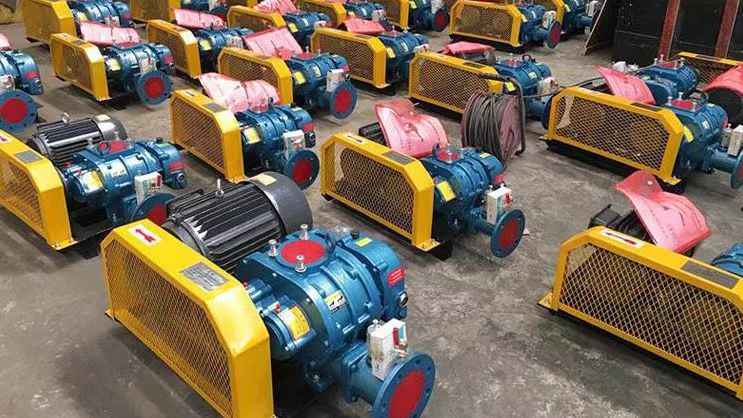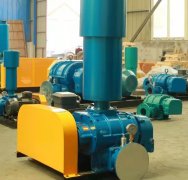Under the same design parameters (such as speed, volume, shell size, etc.), the theoretical outlet pressure capacity of the two blade Roots blower and the three blade Roots blower is the same, because the pressure of the Roots blower is mainly determined by the system back pressure, rather than the number of blades. However, in practical applications, the three blade fan has more advantages in pressure stability, efficiency, and reliability. Here is a detailed comparison:
---

**1. Principle of Pressure Generation**
-Common points:
-Roots blower is a positive displacement blower, and the pressure is formed by the reverse resistance of the system (such as pipes and valves), rather than the active compression of the blower.
-In theory, the allowable pressure of two blade and three blade fans depends on the strength and sealing of the casing (usually single-stage ≤ 0.8 Bar, two-stage ≤ 1.4 Bar).
-* * Differences * *:
-The three leaf fan has lower air flow pulsation and leakage, resulting in higher actual efficiency and lower energy consumption under the same pressure.
-Due to large pulsation, the two blade fan is prone to vibration and noise during high-pressure operation, resulting in increased load on bearings and gears, and weak long-term pressure bearing capacity.
---
**2. Key performance comparison**
|* * Indicator * * | * * Two blade Roots blower * * | * * Three blade Roots blower * *|
|------------------|---------------------------------|---------------------------------|
|* * Pressure range * * | Same as three leaves (e.g. 0.1~0.8 Bar) | Same as two leaves, but more suitable for high-pressure continuous operation|
|* * Airflow pulsation * * | Large (low-frequency impact, ± 10 pressure fluctuations) | Small (high-frequency smooth, ± 5 pressure fluctuations)|
|* * Volumetric efficiency * * | Low (70-85, high leakage) | High (80-90, good sealing)|
|* * High voltage adaptability * * | Requires more frequent maintenance (vibration accelerates wear) | Structural stability, longer lifespan|
---
**3. Selection suggestions**
-* * Pressure ≤ 0.6 Bar * *: Both two leaf and three leaf can be used, but three leaf is more energy-efficient (10-20% lower energy consumption).
-* * Pressure ≥ 0.6 Bar or continuous operation * *: Priority should be given to choosing a three blade fan (high reliability, low maintenance cost).
-* * Special scenario * *: If the system is sensitive to pulsation (such as precision pneumatic conveying), it is necessary to choose three blades or install a stabilizing tank.
---
**4. Reasons for the Advantage of Three Leaf High Voltage**
1. * * Better sealing * *:
-The meshing line of the three bladed rotor is longer, and the gas leakage path is more tortuous, reducing high-pressure reflux.
2. * * Vibration Control * *:
-The three leaf design disperses the airflow pulsation into high-frequency and small fluctuations, reducing mechanical stress.
3. * * Bearing load balancing * *:
-The force distribution of the three bladed rotor is uniform, avoiding periodic impact loads on the two bladed rotor.
---
**5. Common User Misconceptions**
-Misconception: "The more blades there are, the higher the pressure.
-Correction: The number of blades affects the airflow characteristics, not the pressure value. The upper limit of pressure is determined by the strength of the shell and the power of the motor.
-Misconception: "Two blade fans are cheaper and have a high cost performance ratio.
-Correction: Although the initial cost of the three leaf fan is slightly higher, it saves electricity in the long run, requires less maintenance, and has a lower overall cost.
---
**Summary**
-Same pressure capacity: The rated pressure range of the two blade and three blade Roots blowers on the parameter table is consistent.
-Actual performance difference: Three leaf fans operate more smoothly under high pressure and are suitable for modern industrial needs.
-* * Suggestion * *: Unless the budget is extremely limited or old equipment is renovated, prioritize choosing a three blade fan.



